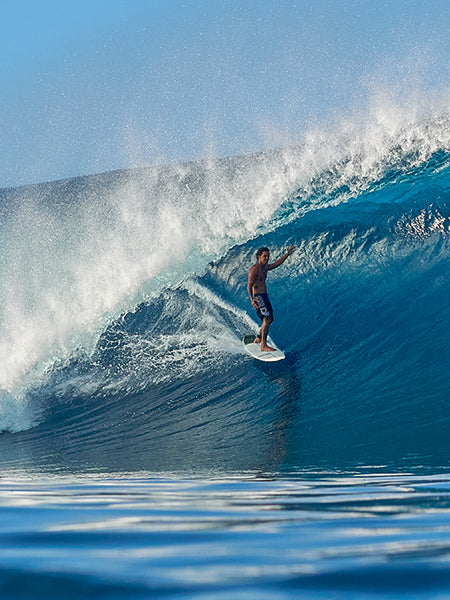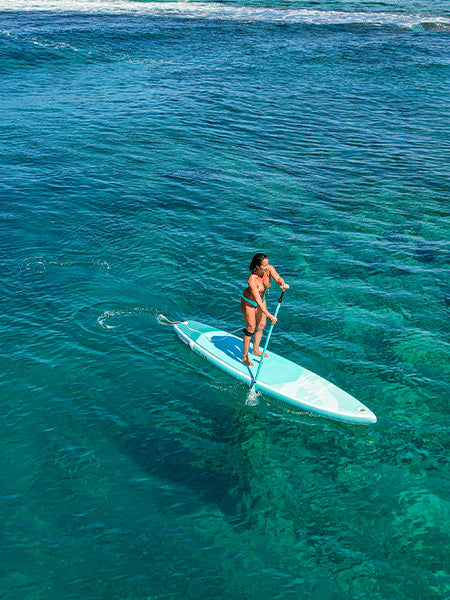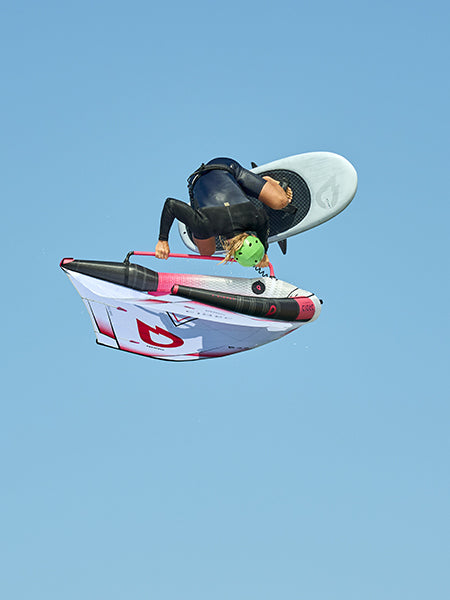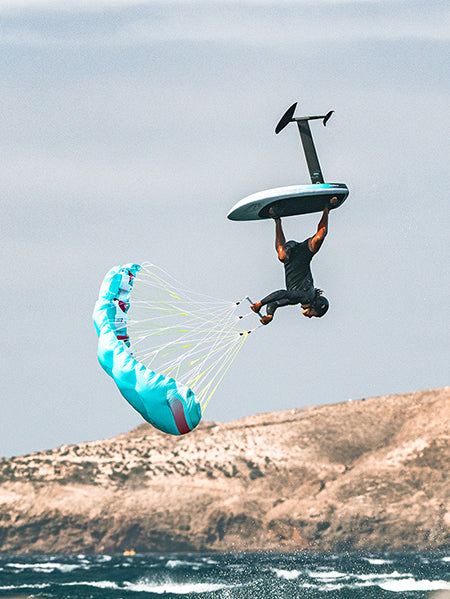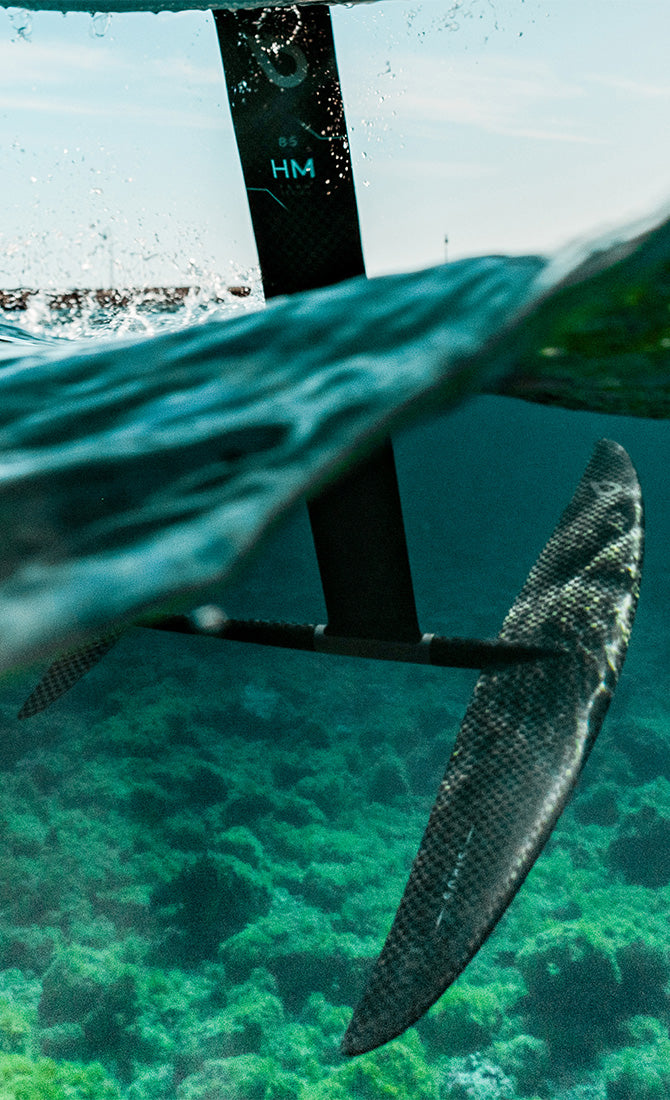Backside air
Mix things up by freeing your foil in between two turns with the backside air!
You’re mastering fast and committed turns on the open face of the wave? The next area of development takes place above the wave. One of the doors to enter this new area is the backside air. Let’s see how to do it.
To achieve a legit backside air, all you need is speed. That is all ! So in theory it’s pretty simple but it’s as you expect a whole different story in real life! 😉 Your skills in wave riding are fundamental to nail this move because it is done completely in freefly. To send a backside air you must therefore be able to surf with ease and a lot of speed. If you are not yet able to link turns together using only the energy of the wave or to accelerate out of thigh curves, it probably means it is still a bit early to try a backside air. At least, your first attempts may be disappointing 😉
The most suitable conditions to attempt a backside air are side-onshore winds with at least hip-sized waves. Be careful, the smaller the wave, the less depth you have for your foil. For your first attempts, try to pick up speed on a wave that is not too hollow and send it at some distance from the breaking point of the wave. Just to have a little respite to get going again in case of a fall. Adopt a down the line approach, staying high on the wave, to take advantage of its energy and accelerate. As you progress, you will be able to widen your bottom turn by descending lower on the wave before coming back up having picked up a maximum of speed. At this point, you will need the whole body to play along with a perfect anticipation of the upper body. As a surfer would from bottom to top turn. The final step of progression is the backside air attempted like an off the lip, hitting the wave as it breaks and landing with the whitewater. A final step that would earn you a place on the world tour 😉
Before getting there, following a down-the-line trajectory that makes you accelerate, spot a safe shoulder and as for a classic jump, sink the foil to pop. Unlike a classic jump, you don’t benefit from the support of the wing and that makes a big difference. So go for it. The wing being in neutral at the end of your back hand, it’s all about surfing. As you take off, regroup and redirect your gaze down the wave. Bring your back foot under your butt and aim for your landing spot with the nose of the board. The legs are a bit more extended before impact, which provides room for cushioning. If you manage to land on the wave, it can relaunch you without having to take the wing back in hand. It is then the perfect execution.
